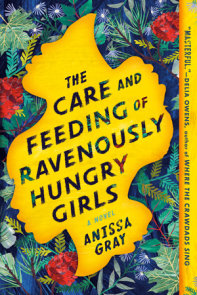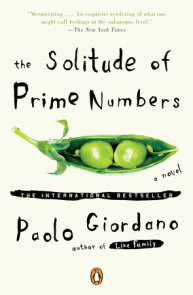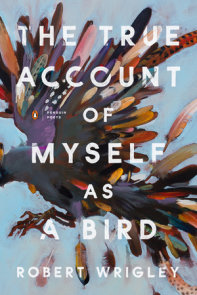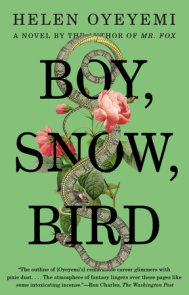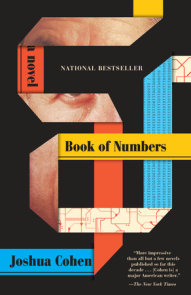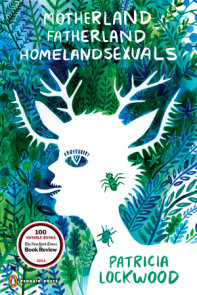READERS GUIDE
The introduction, discussion questions, and suggested further reading that follow are designed to enhance your group’s discussion of The Cranes Dance, Meg Howrey’s searing novel about two sisters who reach the heights of the New York ballet world—and what it costs them to get there.Introduction
The Cranes Dance tells the fast-paced story of two exceptionally talented dancers, Kate and Gwen Crane, their rise to prominence in the high-stress world of New York’s most prestigious ballet company, and their eventual fall from grace. Narrated by Kate in a voice that is by turns flippant, cynical, heartbroken, and harshly self-critical, the novel offers a visceral portrait of the dancer’s life, and the close bond between sisters on and off the stage.Kate and her younger sister Gwen have always been considered exceptional dancers in their hometown suburb in Michigan. Once Kate is accepted into a topflight dance school in New York, she finds herself surrounded by competitive dancers who have also always been the best. Nevertheless, after graduation, she is invited to join New York’s premiere dance company. Soon, her sister follows, dancing even more brilliantly than Kate, and they move into a small apartment with another company dancer, Mara.
Things go well until Gwen starts to exhibit strange unhinged behavior. She develops an obsession with certain numbers, which she uses to calm herself. Kate presses Gwen to start therapy, but Gwen insists that Kate attend the sessions in her place. Things escalate, and when Kate witnesses an act that takes both sisters over the edge, she decides she’s had enough and calls her parents to retrieve Gwen. So intertwined is Kate’s identity with Gwen’s that her sister’s absence proves almost as difficult to manage as her presence. Kate begins to doubt her own sanity, as she observes herself acting more and more erratically. Struggling to overcome injury, she becomes increasingly dependent on Vicodin, even while she is given ever more demanding roles, ultimately dancing Tatiana in A Midsummer Night’s Dream, a role Gwen was slated to perform.
A dramatic inside look at the most challenging realities ballet, The Cranes Dance is also an unflinching look at the symbiotic relationship of two sisters. Written with bristling immediacy and emotional insight, the novel explores the tangled nexus of ambition, talent, and jealousy in the dance world; the blurry line between eccentricity and insanity; and the limits of how far one person can go in saving another.
Questions and Topics for Discussion
1. Why does Meg Howrey use the passage from Through the Looking-Glass as an epigraph for The Cranes Dance? In what ways is the quote thematically relevant to the novel?
2. Throughout the novel, Kate directly addresses her readers: “I haven’t assigned you a face or body, invisible audience member, let alone a background in the arts” [p. 4]. “You don’t know a goddamn thing, you’re just following the story like anyone else, right?” [p. 61]. “I like how quiet you are, which allows me to go on performing” [p. 91]. What is the effect of being addressed in this way? In what ways is Kate’s narrative a kind of performance?
3. What kind of narrator is Kate? How does she regard herself and the story she’s telling?
4. Kate writes: “Sentences are trenches you can take cover in. They are not wildly comfortable. They are not bulletproof. But they can give you the illusion of safety” [p. 287]. Kate is clearly exposing much of her inner life in the novel. Is she also “taking cover” in her writing, or in the way she speaks with others?
5. What makes Kate and Gwen’s relationship so complex and challenging? How does Gwen’s absence—and lack of communication—affect Kate?
6. Meg Howrey was a highly accomplished dancer for many years and describes the experience of dancing, and the dancer’s life, with a remarkable vividness and authority. What are the daily stresses that high-profile dancers have to deal with? What aspects of being a dancer does Kate find particularly destructive? What aspects does she most enjoy?
7. In the tense, pivotal scene where Kate finds Gwen in the throes of her final breakdown, Gwen says, “You can’t help me. You don’t know how. You don’t know what I know. You can’t ever feel things the way I do. You are just pretending to be alive” [p. 342]. Is there any justice in Gwen’s accusations? Should Kate have acted more quickly, or differently, in response to her sister’s downward spiral?
8. Why does Kate feel compelled to keep dancing even though she’s suffering constant neck pain, has become a Vicodin addict, and has watched the stress of the dancer’s life gradually ruin her sister’s—and threaten her own—mental health?
9. Kate frequently questions where the line between sanity and insanity lies. On p. 108, she writes: “You cut your food up in special ways, or you cut yourself, or paper dolls. You steal things or tell lies or speak to strangers in a Russian accent. You have sex with someone you love or with someone who gets you really drunk. You lie to your parents, your boyfriend, yourself, your therapist. You cheat on your homework or do other people’s homework for money. You get up, you take class, you rehearse, you perform, you go to bed. How do you decide which of these things are truly crazy and which are just being alive?” In what ways does the novel demonstrate how slippery the boundary is between “normal” and “crazy” behavior?
10. The Cranes Dance is a dramatic and often tense novel, but it is also refreshingly funny. What are some of the novel’s most comedic moments? How does humor affect the buildup of emotional tension?
11. What are the pleasures of reading a first-person, present-tense, highly subjective and distinctively voiced novel? How different would the novel have been if it had been told by an omniscient, third-person narrator?
12. Marius tells Kate: “Sometimes I think you are the only person in the room that understands what I’m saying. It’s why I keep you around, you know. As hard as it’s been to watch you diminish yourself” [p. 187]. How does Kate react to this statement? In what ways is she diminishing herself? What positive development does Marius’s statement foretell?
13. What drives Kate’s own spiraling mental instability? What stops her from following in Gwen’s footsteps?
14. In what ways are Kate’s friendships with the young dancer, Bryce, and the older company patron, Wendy, important? What qualities do they bring out in her? How do they affect the course of the novel?
15. Kate says that she doesn’t want a normal life, she wants an extraordinary life. What does the novel contribute to the long-standing debate about the relationship between insanity and creativity? Are extraordinarily talented and artistic people like Kate and Gwen inherently unstable, or fated to live tumultuous lives?








